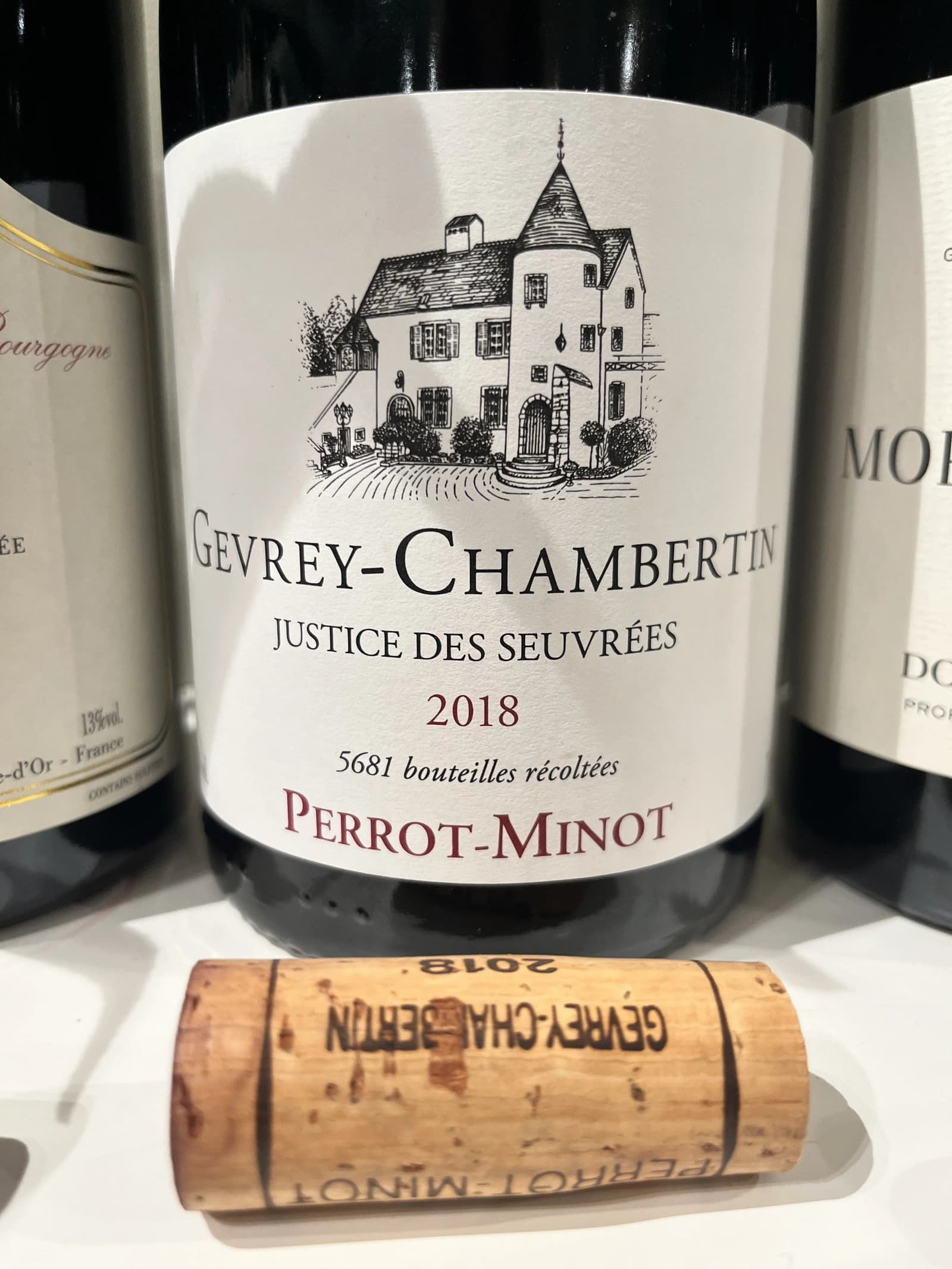Domaine Perrot-Minot Gevrey-Chambertin Justice Des Seuvrées 2018
- Region
- France » Burgundy » Côte d'Or » Côte de Nuits » Gevrey-Chambertin AOC
- Type
- red still, dry
- Producer
- Vintage
- 2018
- Grapes
- Pinot Noir
- Alcohol
- 13
- Sugar
- 1.6
- Volume
- 750 mL
- Cellar
- not available
- Find at

Ratings
This wine offers a beautiful bouquet, melding wet earth, dark fruits, blackberry, mulberry, roasted coffee, and crushed berries into a captivating composition. The slightly perfumed nature adds an intriguing layer, especially given the dominance of earthy notes, creating a unique, appealing and friendly aromatic profile.
Its structure is impressive, supported by good acidity, a notable evolution on the palate, and a long aftertaste. Achieving almost perfect balance, this wine manages to be both delicious and delicate, despite its underlying power. It represents a wonderful amalgamation of house style and appellation characteristics. Overall, it offers a complex, engaging experience that invites reflection and appreciation.
About Producer
The estate's origins date back to the mid-nineteenth century, but significant expansion and organization occurred in the early 20th century under Amédée Merme and his son Armand. The focus was on enhancing the estate's reputation through quality wine production.
In the 1970s, Marie-France Merme and Henri Perrot-Minot took over, continuing the tradition of quality and innovation. Their son, Christophe Perrot-Minot, joined as manager in 1993 after gaining extensive experience as a wine trader.
Today, the estate spans 13 hectares across prestigious terroirs in Morey-Saint-Denis, Gevrey-Chambertin, Chambolle Musigny, Vosne Romanée, and Nuits-Saint-Georges.
Christophe Perrot-Minot emphasizes biodiversity, using organic farming practices and reducing conventional product use. Systematic ploughing and earthing up of vines in winter are key practices. The estate employs short guyot pruning to limit grape production and ensure optimal ripening. Leaf thinning and green harvesting are adjusted annually to optimize fruit ripening. The harvest is entirely handpicked with a dual sorting process, both in the vineyard and at the sorting table. Grapes are halved for quality checks, with a focus on selecting only the healthiest and most ripe.